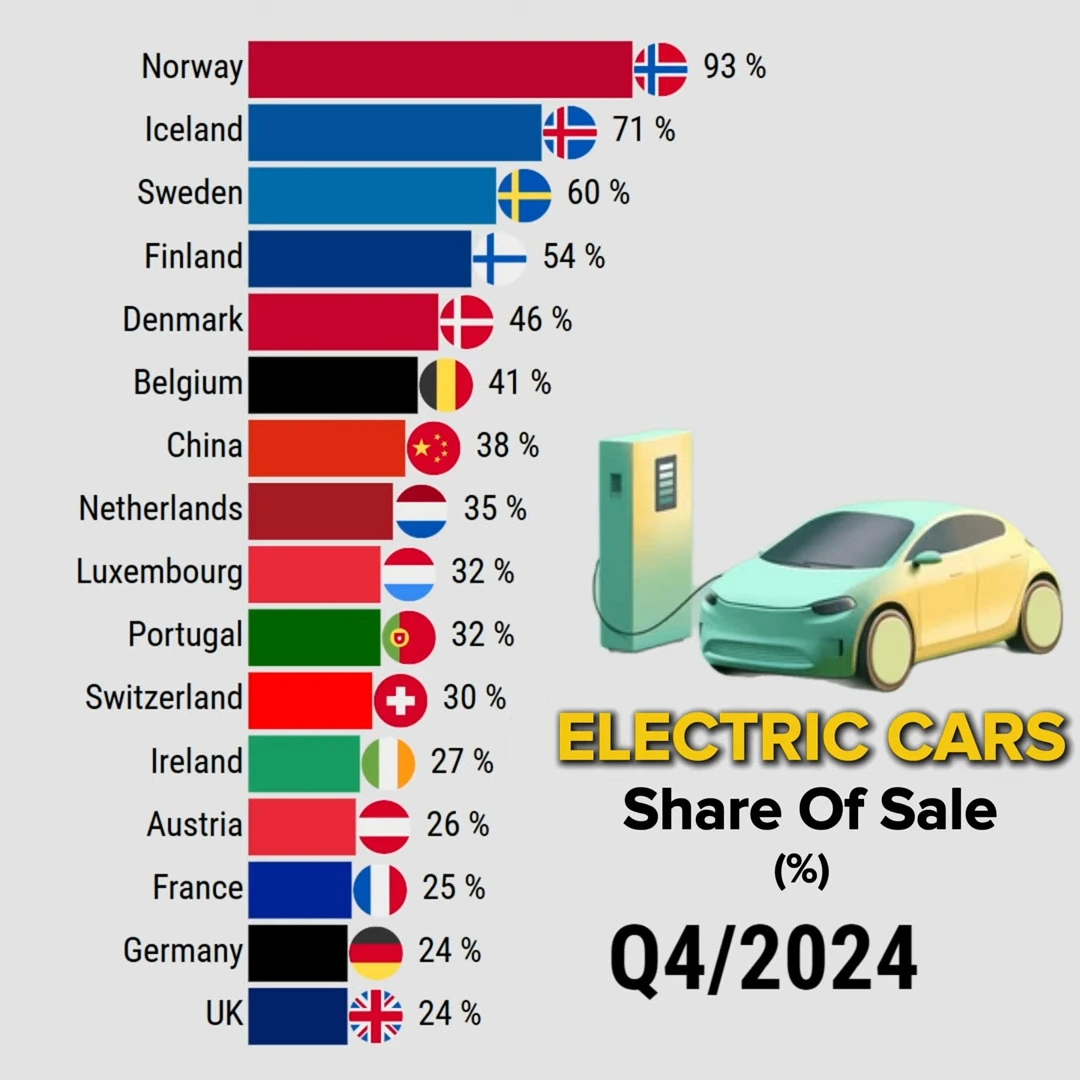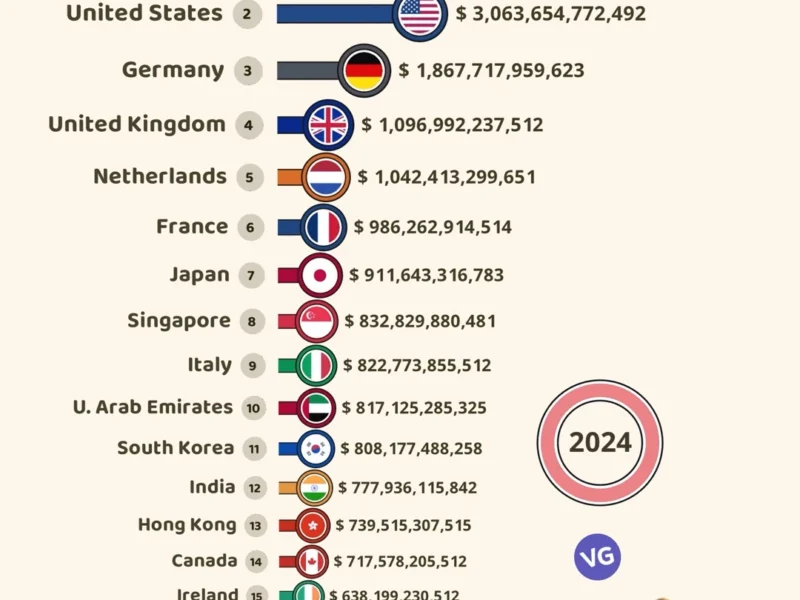Nordic Dominance in EV Adoption
The data reveals a striking pattern in electric vehicle adoption across Europe, with Nordic countries dramatically leading the transition to electric mobility. Norway stands as the undisputed leader, with an extraordinary 93% of new car sales being electric vehicles, followed by Iceland at 71% and Sweden at 60%. Finland completes the Nordic bloc’s strong showing with 54% of new car sales being electric.
| Rank | Country | EV Share (%) |
|---|---|---|
| 1️⃣ | 🇳🇴 Norway | 93% |
| 2️⃣ | 🇮🇸 Iceland | 71% |
| 3️⃣ | 🇸🇪 Sweden | 60% |
| 4️⃣ | 🇫🇮 Finland | 54% |
| 5️⃣ | 🇩🇰 Denmark | 46% |
| 6️⃣ | 🇧🇪 Belgium | 41% |
| 7️⃣ | 🇨🇳 China | 38% |
| 8️⃣ | 🇳🇱 Netherlands | 35% |
| 9️⃣ | 🇱🇺 Luxembourg | 32% |
| 🔟 | 🇵🇹 Portugal | 32% |
| 11️⃣ | 🇨🇭 سويسرا | 30% |
| 12️⃣ | 🇮🇪 Ireland | 27% |
| 13️⃣ | 🇦🇹 Austria | 26% |
| 14️⃣ | 🇫🇷 France | 25% |
| 15️⃣ | 🇩🇪 Germany | 24% |
| 16️⃣ | 🇬🇧 United Kingdom | 24% |
Central European Performance
The central European nations show a solid but lower rate of EV adoption. Belgium leads this group with 41% of new car sales being electric vehicles, while the Netherlands follows at 35%. Luxembourg and Portugal both show identical adoption rates of 32%, demonstrating the steady penetration of EVs into these markets.
Major Economies’ Transition
Interestingly, Europe’s largest economies show more modest adoption rates. Germany and the UK both report 24% of new car sales as electric vehicles, while France slightly edges ahead at 25%. This could reflect the challenges of transitioning larger, more complex automotive markets to electric mobility.
The China Factor
China’s presence in this predominantly European list is notable, with an impressive 38% share of electric vehicle sales. As the world’s largest automotive market, this percentage represents a significant volume of electric vehicles and demonstrates China’s commitment to electric mobility.
Analysis and Implications
The stark contrast between Nordic and other European nations’ adoption rates can be attributed to several factors:
- Strong government incentives in Nordic countries
- Well-developed charging infrastructure
- High environmental consciousness among consumers
- Higher average income levels supporting the transition to EVs
- Favorable climate policies and regulations
These figures suggest that while electric vehicle adoption is progressing across Europe, there remains a significant north-south divide in adoption rates. The data also indicates that market size and industrial complexity may influence the pace of EV transition, with larger automotive markets showing more moderate adoption rates.
Understanding these patterns is crucial for policymakers, automotive manufacturers, and infrastructure planners as they work to accelerate the transition to electric mobility across different markets and conditions.



